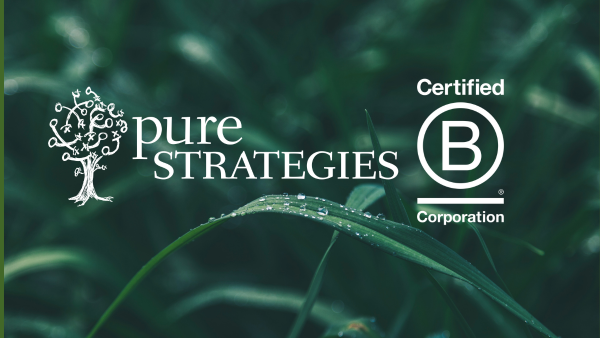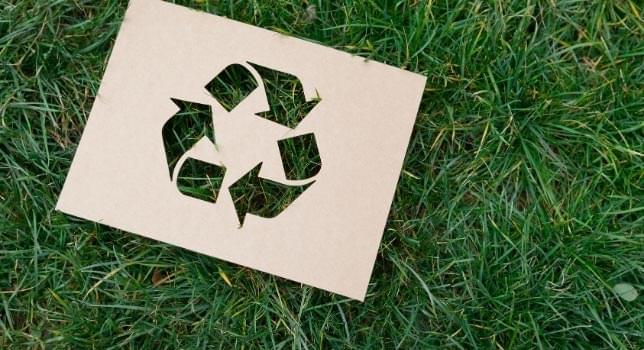Plastic is among the top priorities for many corporate sustainability strategies. There is a growing number of companies with goals to reduce plastic use, working to ensure plastic packaging is recyclable, and making claims about plastic-free products and packaging. A hidden challenge with these efforts is the lack of clarity about what materials are considered plastic and preferred solutions.
The American Chemistry Council tracks these resins: polyethylene (LDPE/LLDPE/HDPE), polypropylene (PP), polyvinyl chloride (PVC), polystyrene (PS), expanded polystyrene (EPS), epoxy, isocyanates and polyether polyols. While these materials are often the focus of corporate plastics efforts, questions arise such as: Are bio-based versions included? Or, what about alternative resins or compostable items?
Without a solid understanding of what materials are of focus, how can action be taken and progress achieved? The solution is simple: to define what plastic means for your company’s efforts. To get to an effective definition, it is important to consider the drivers and aims for the program.
Are you looking to shift the source of material?
Traditionally, plastic resins are manufactured from fossil fuels, oil, and gas. Converting these materials to plastic is an energy and GHG-intensive process. Further, they come from a finite resource, and their production is associated with toxic pollution — with this human health impact likely disproportionately shouldered by communities of color.
Since packaging is the top use of common resins and these are largely designed to have a limited useful life, Greenpeace and others have called for companies to switch to packaging that does not rely on fossil fuels. A common solution is to use recycled plastic. However, it is important to dig a bit deeper with this option. Some of the emerging recycling technologies (such as pyrolysis) rely heavily on fossil fuels for energy and inputs. So, companies need to clarify the boundaries for shifting away from fossil fuel reliance when that is an aim and explore broader solutions.
Are there concerns with plastic waste?
Over 85 percent of plastic packaging is wasted and not recovered for another use in the U.S. Even the most common packages, PET and HDPE bottles, are recycled less than a third of the time by Americans. Thus, most of the plastic packaging can escape into the environment, polluting natural areas when it does not make it to the landfill or get incinerated. As a result, plastic packages are top items found in litter audits, and the U.S. is a top source of plastic pollution impacting communities around the globe.
Concern for plastic waste is a growing driver for action. New laws (including those focused on extended producer responsibility) and voluntary efforts (such as the New Plastics Economy Global Commitment) are centered on this aim. The European Union Directive 2019/904 on single-use plastics notes that its purpose is “first and foremost to reduce the quantity of waste generated.”
The Pew Charitable Trusts states that solutions for plastic waste, “require reducing plastic use, finding substitutes for plastics, improving recycling practices, expanding waste collection and ensuring that disposal facilities prevent plastic leakage as a transitional measure.”
However, waste-driven initiatives for plastic do not have a single approach to identify — which may be a concern and may be a solution. Some initiatives find bio-based plastics that are industrial-compostable for any product to be acceptable, despite limited scale to support this as a broad waste solution. Another approach accepts only naturally occurring polymers, assuming these would have fewer concerns with mismanagement of the waste. And there are additional ways to draw the boundaries around plastic materials to address waste concerns.
In the EU, the single-use regulation guidance points out that typical fossil fuel sources are considered plastics and regulated but so are many bio-based plastics when they are not natural polymers. That means packages made from polylactic acid (PLA) are considered plastic. In addition, natural polymers are regulated as single-use plastics when they have been chemically altered. The EU goes further to consider natural polymers that are industrially produced to be regulated as plastic (such as polyhydroxyalkanoates, or PHA). This broader approach is likely different than how many companies are currently working.
Are there broader life-cycle drivers or aims?
There are additional considerations with plastics, such as human health and microplastic pollution, that may broaden a definition or scope for corporate work on plastics.
Clean Production Action’s Chemical Footprint Project and focused work on the Plastics Scorecard highlight the material health considerations of plastics. The group points out that hazardous chemicals are typically used in plastics such as benzene, Bisphenol A (BPA), styrene and vinyl chloride monomer. It notes that, “exposure to a wide array and high volume of chemicals of high concern during manufacturing, usage and disposal poses a significant risk to the health of workers, communities and the global environment.” The Plastics Scorecard underscores that bio-based plastics do not necessarily use safer materials than their fossil-fuel alternatives.
Microplastics are the small pieces of resins and polymers that pollute the environment. They are found across the environment — impacting wildlife, ecosystems, and ending up in our food and drinking water. The main sources of microplastics are washing synthetic textiles and the abrasion on tires from driving vehicles, along with other sources (such as encapsulated ingredients).
Google demonstrated progress with defining plastic for its aims but has more to do. The company has a set of goals on plastic centered on driving toward a circular economy to reduce reliance on finite resources and to avoid waste. In its goal to use recycled or renewable material in at least 50 percent of plastic used across its consumer hardware product portfolio by 2025, the company notes that bio-based plastic is accepted as a renewable material but does not clarify additional criteria of the plastic such as its end-of-life requirements or the level of transformation of original bio-based material that may be acceptable.
The company is exploring chemical recycling options to support the recycled content aims, including the above goal and an additional goal to include recycled materials in 100 percent of Made by Google products launching in 2022 and every year after. At this point, it is not clear if there are additional environmental criteria for which chemical recycling approaches may fit the company’s needs and overall sustainability strategy (such as climate considerations).
What is clear, is that there are different ways to define and scope what is included in plastic corporate efforts. In our work with companies, it has helped to pinpoint the aims for the program to ensure goals are positioned appropriately. Then, it helps to identify criteria for what is in scope and out of scope (or what is an acceptable solution and what is not).
Further, a more systemic view of plastic programs is a more effective approach. Instead of focusing just on fossil fuel-reliance or just on waste, look more holistically at environmental and human health concerns across the life cycle to prevent unintended consequences. With whatever approach you choose, a clear definition of what plastic means for your business will help to ensure progress and drive to more sustainable solutions.
This article originally appeared in GreenBiz on February 2, 2022.
Image by Emily Bernal on Unsplash.


